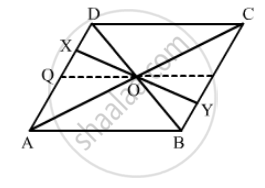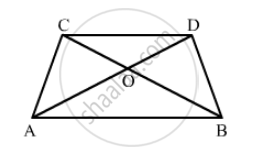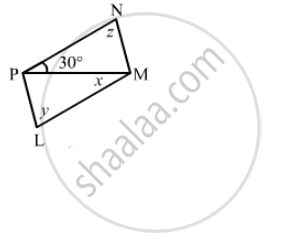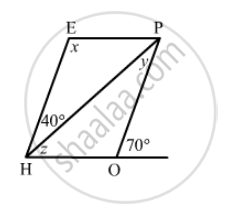Advertisements
Advertisements
Question
Diagonals of parallelogram ABCD intersect at O as shown in the following fegure. XY contains O, and X, Y are points on opposite sides of the parallelogram. Give reasons for each of the following:
(i) OB = OD
(ii) ∠OBY = ∠ODX
(iii) ∠BOY = ∠DOX
(iv) ∆BOY ≅ ∆DOX
Now, state if XY is bisected at O.

Solution
(i) Diagonals of a parallelogram bisect each other.
(ii) Alternate angles
(iii) Vertically opposite angles
(iv)\[\text{ In } ∆ BOY \text{ and } ∆ DOX: \]
\[OB = OD (\text{ diagonals of a parallelogram bisect each other })\]
\[\angle OBY = \angle ODX (alternate angles)\]
\[\angle BOY = \angle DOX (\text{ vertically opposite angles })\]
ASA congruence:
XO = YO (c.p.c.t)
So, XY is bisected at O.
APPEARS IN
RELATED QUESTIONS
All rhombuses are parallelograms.
Name the quadrilaterals whose diagonals are perpendicular bisectors of each other
Given below is a parallelogram ABCD. Complete each statement along with the definition or property used.
(i) AD =
(ii) ∠DCB =
(iii) OC =
(iv) ∠DAB + ∠CDA =

The following figure is parallelogram. Find the degree values of the unknown x, y, z.

In the adjacent figure HOPE is a parallelogram. Find the angle measures x,y and z. State the geometrical truths you use to find them.

Two adjacent angles of a parallelogram are as 1 : 2. Find the measures of all the angles of the parallelogram.
ABCD is a parallelogram in which ∠A = 70°. Compute ∠B, ∠C and ∠D.
Which of the following statement is true for a rhombus?
It is a parallelogram.
The diagonals of a parallelogram are not perpendicular. Is it a rhombus? Why or why not?
Show that each diagonal of a rhombus bisects the angle through which it passes.
